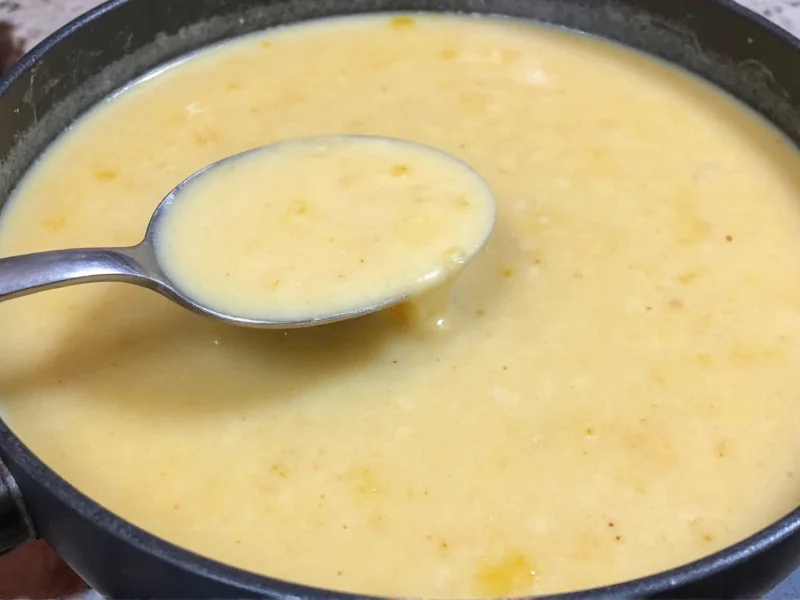When your recipe calls for canned cream of chicken soup but you're out of stock or seeking healthier alternatives, knowing reliable substitutes becomes essential. Many home cooks avoid commercial versions due to high sodium content, preservatives, or simply prefer homemade options with recognizable ingredients. This guide provides tested alternatives that maintain the creamy texture and savory flavor profile crucial for casseroles, sauces, and soups.
Why Substitute Canned Cream of Chicken Soup?
Commercial cream of chicken soup often contains additives, excessive sodium (typically 800-1000mg per serving), and preservatives that don't align with clean eating preferences. Many cooks seek substitutes for specific dietary requirements including gluten-free needs, dairy restrictions, or lower-calorie options. Understanding the functional role of cream of chicken soup in recipes—providing creaminess, binding ingredients, and delivering savory chicken flavor—helps select the most appropriate substitute.
Top Homemade Cream of Chicken Soup Alternatives
Creating your own substitute gives you complete control over ingredients and nutritional content. The following options work across various dietary needs while delivering professional results.
Classic Roux-Based Substitute
This traditional method produces the closest texture match to canned versions. Melt 2 tablespoons butter in a saucepan over medium heat. Whisk in 2 tablespoons all-purpose flour and cook for 1-2 minutes until golden. Gradually add 1 cup chicken broth while whisking constantly. Stir in ½ cup milk or half-and-half, ¼ teaspoon garlic powder, ¼ teaspoon onion powder, and salt to taste. Simmer for 5 minutes until thickened. This homemade cream of chicken soup alternative works perfectly in casseroles and pot pies.
Quick Dairy-Free Option
For those avoiding dairy, combine 1 cup unsweetened coconut milk with ½ cup vegetable broth. Whisk in 2 tablespoons cornstarch dissolved in cold water. Add 1 teaspoon chicken bouillon paste or ½ teaspoon poultry seasoning. Heat gently until thickened. This dairy-free cream of chicken soup substitute maintains creaminess without dairy while working well in most recipes.
Healthy Greek Yogurt Version
For a protein-rich, lower-calorie option, mix ½ cup plain Greek yogurt with ½ cup warm chicken broth. Add 1 tablespoon olive oil, ¼ teaspoon each of garlic powder and onion powder, and salt to taste. Whisk until smooth. Use immediately in recipes requiring moderate heat, as high temperatures may cause separation. This healthy cream of chicken soup replacement adds creaminess with added protein and reduced fat.
| Substitute Type | Texture Match | Prep Time | Dietary Notes | Best Recipe Applications |
|---|---|---|---|---|
| Classic Roux-Based | Excellent | 10 minutes | Contains gluten, dairy | Casseroles, pot pies, gravies |
| Dairy-Free Coconut | Very Good | 8 minutes | Gluten-free, dairy-free | Creamy soups, pasta sauces |
| Greek Yogurt Blend | Good | 5 minutes | High-protein, lower-fat | Cold dishes, moderate-heat recipes |
| Mushroom Soup Base | Fair | 5 minutes | Vegetarian option available | Vegetable casseroles, sauces |
| White Bean Puree | Fair | 15 minutes | High-fiber, vegan | Hearty soups, stews |
Specialty Substitutes for Dietary Restrictions
When following specific diets, standard substitutes may require modification. For gluten-free cream of chicken soup substitute options, replace wheat flour with equal parts cornstarch, arrowroot, or gluten-free flour blend. Create a roux using 2 tablespoons butter and 1½ tablespoons cornstarch, then gradually add 1 cup chicken broth.
Vegan cooks can make a convincing substitute by combining 1 cup unsweetened plant-based milk with ½ cup vegetable broth, 1 tablespoon nutritional yeast for umami flavor, and 1 teaspoon vegan chicken-flavored broth powder. Thicken with a cornstarch slurry as needed.
Using Substitutes in Popular Recipes
Understanding how substitutes behave in different cooking environments prevents recipe failures. In baked dishes like casseroles, the classic roux-based substitute holds up best through extended cooking times. For stove-top sauces requiring quick preparation, the Greek yogurt version works well but should be added at the end of cooking.
When substituting in green bean casserole—a classic application for canned cream of chicken soup—the homemade roux version delivers identical results with superior flavor. For chicken pot pie, the dairy-free coconut option maintains structure during baking while providing rich texture.
Common Substitution Mistakes to Avoid
Many home cooks encounter issues when substituting cream of chicken soup. Adding cold liquids to hot roux causes lumps—always temper by adding small amounts of liquid while whisking. Over-thickening leads to gummy textures; remember the sauce will thicken more as it cools. When using dairy-free alternatives, avoid boiling as this can cause separation. For best results in baked dishes, prepare your easy cream of chicken soup replacement with slightly less thickener than you'd use for stove-top applications, as baking concentrates flavors and textures.
Storing and Batch Preparation
Homemade substitutes typically keep refrigerated for 4-5 days. For meal preppers, prepare larger batches and freeze in ice cube trays, then transfer to freezer bags. These make-ahead cream of chicken soup alternatives provide convenient portions for single recipes. Thaw overnight in the refrigerator before use, and gently reheat while stirring to maintain smooth texture.











 浙公网安备
33010002000092号
浙公网安备
33010002000092号 浙B2-20120091-4
浙B2-20120091-4